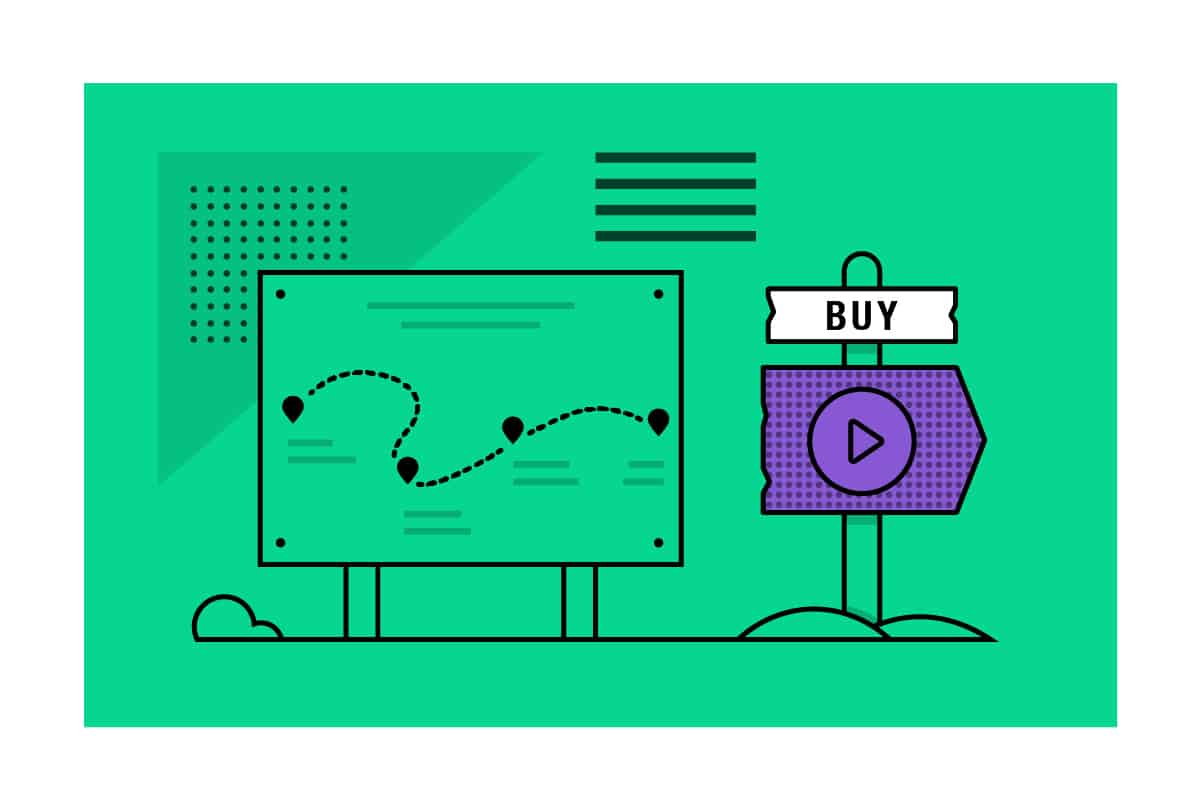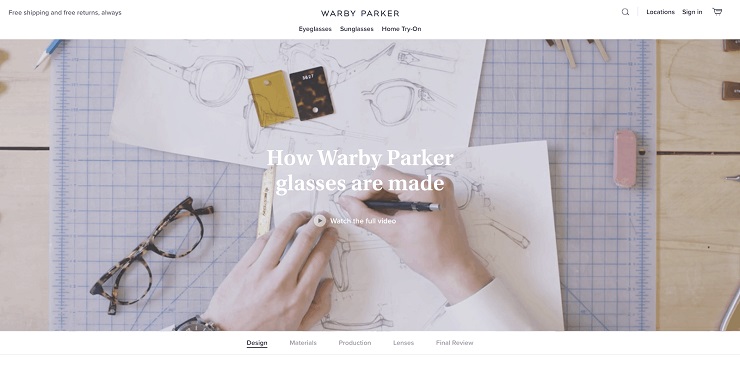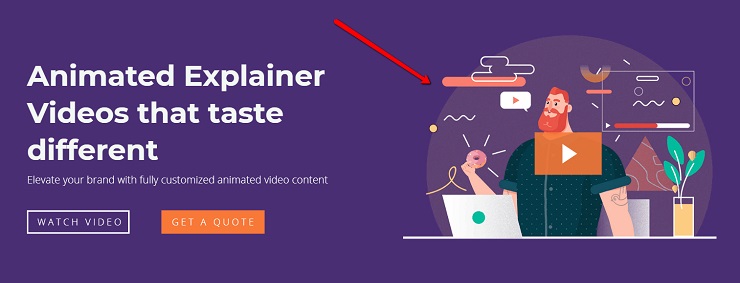If you’re starting to think about a marketing strategy for your ecommerce store, chances are you’ve come across tons of articles (like this one!) praising video as the ultimate tool. You’ve read about how videos will increase your lead generation, boost interest around new products, and help you tell your brand’s story.
Like every other business owner before you, you probably have your doubts, and that’s OK. We’ve all been there.
Granted, I’m a bit biased here, but there’s a reason why 87% of business owners are satisfied with their video marketing’s ROI—it just works! That said, the only way for your to join this club of aspiring marketing auteurs is to learn precisely how to use video effectively.
So in this article, we’ll discuss the tactics my company Yum Yum Videos uses to create high-converting videos for clients.
And that starts by matching your content to your customers’ buyer’s journey.
Understanding the Buyer’s Journey
Think about the last time you bought something. Let’s say a TV. You didn’t just wake up one day and think, “Hey, I should get a new TV!” out of nowhere. Maybe you saw an ad for a brand’s new, bigger TV, or maybe a friend was talking to you about how great 4K is. However it started, the itch appeared, and it didn’t go away.
You went online and searched for TVs. You browsed a couple of sites, compared prices, checked the specs, saw reviews, considered shipping times and payment methods. Basically, you did your homework. Finally, you picked one store and bought the thing—there’s a happy ending!
This is a process that has become second nature for most of us. It’s what we marketers know as “the buyer’s journey.” The dull, dictionary-like definition of it would be “the process in which a customer becomes aware of a need, considers their options to satisfy it, and finally decides on one of them.” But we prefer the TV story, to be honest.
As you can see, both in the example and the definition, there are three clear stages in play:
- Awareness stage: The buyer becomes aware of a need or a particular problem (you wanted that 4K TV).
- Consideration stage: The buyer knows about the need or problem and is out to find a solution (you went online and browsed several sites/did research).
- Decision stage: The buyer analyzed options and chose one (you bought the TV from the store that felt the most reliable/beneficial).
These three stages are present in virtually all purchases, meaning your customers will experience it when looking to buy what you offer. Now, that alone is a powerful enough reason to account for the journey in your marketing. But we’re here to talk about video, specifically. So let’s see how video content plays into each stage.
In the awareness stage, the buyer realizes they want or need something (you watching an ad for the new TV that gives you that “aha!” moment).
In the consideration stage, the buyer is checking what solutions are available for them (watching a few product videos to learn the specs of each TV models).
In the decision stage, the buyer has a very short list of solutions that might work and picks one (seeing a couple of reviews on YouTube on the models you are considering and choosing one).
Your buyer’s journey video marketing strategy has to consider those motivations and deliver high-quality content targeted to work best for each stage. Having the help of professional video production services can facilitate things a great deal, but the key here is to know what you should and shouldn’t do at each stage.
If you’re too pushy with your sales pitch in the awareness stage, you’ll drive them away. Fail to be clear about your competitive advantage in the decision stage, and you risk losing them to the competition.
A Great First Impression: Videos for the Awareness Stage
In the awareness stage, people might not even know you have a solution for what they need. They might not even know your brand! That means that you’ll engage with them for the first time during this phase. So you better make the best first impression you can. And what better way to do so than with an impressive piece of video?
Videos are unbeatable in the awareness stage. They educate the audience on potential problems and spark interest in your company.
To do that, you’ll want to make videos that aren’t making a hard sell. Instead, focus on creating videos that provide valuable and relevant content to engage your target audience. Succeed, and you’ll notice an influx of new eyes to your ecommerce store that’ll soon keep coming after that.
What videos are those? Two types immediately come to mind:
Commercial Ads
What’s the most common way of learning about a new company, product, or service? Through ads, of course. A short, well-developed video ad can let prospects know who you are, establish your brand’s voice, and engage them with a story that says, “Hey, here we are, did you know about us?”
Check out the video we did for Tortilla Land, a healthier alternative for tortilla lovers. The video is short, colorful, and packed with a fun and happy vibe—just as the potential customers would be after enjoying their products.
Educational Videos
The basic idea behind these videos is to address your target audience’s concerns in such a way that you’re introducing your brand as well. Thus, you’ll be delivering value by teaching your prospects about a specific topic they are interested in, while you position yourself as an expert in the field.
Warby Parker does a great job with this. They’ve devoted an entire section of their site to educational content, where instructional videos shine the most.
Check out how a quick video helps prospects understand how to measure glasses correctly.
You may be thinking, “That’s great, but where should I use these videos?” New brands and startups in the ecommerce world don’t get a ton of traffic to their stores. That means using these videos on your website can be kind of futile. So where do you use them? Everywhere you can!
Upload them to video sites like YouTube and Vimeo, and on your business’s social media accounts. Also, include them in your emails and, yes, use them on your website! Warby Parker’s example is a great one you can follow, since having a whole section to educate your audience won’t just bring you traffic that wouldn’t find you otherwise—it will help you build your reputation as an expert.
Solutions for Everyone: Videos for the Consideration Stage
The awareness stage makes people realize they have a need, and that you may be able to help them with it, whether that’s the need for an online store that delivers their groceries more quickly, or a new leash for their dog.
The consideration stage is the time to strike, and get yourself on that short list of options they are considering to address that need.
Your goal here is simple to understand, yet hard to achieve—let your audience know why what you’re offering is the best solution for them. There are plenty of ways to do this, but experience has taught us that the best way is by illustrating how customers’ lives can improve with you in the picture.
As an adage that’s been making the rounds for years says, if a picture is worth a thousand words, a video is worth millions. That’s why you should produce the highest-quality videos possible, instead of merely lecturing your audience about why you matter.
The videos that will help you do that are:
Explainer Videos
These are short videos that showcase what you offer in a fun, engaging, and straightforward manner. They’re fantastic for introducing your brand and outlining the benefits you offer, all without boring your audience. They follow the traditional narrative where a problem is introduced, a solution is offered, and the issue is resolved.
Here’s an explainer video we did for Shift.org. In a little over a minute, you’ll get what the problem is (the challenges for veterans to transition to the workforce), the solution (Shift.org’s platform and support plans), and the benefits (successfully attaining the goal). And the fact that it’s an animated explainer video makes it even more fun and compelling.
Product Videos
People browsing through your ecommerce store don’t just want to read descriptions and tech specs or take a look at some pictures. They want to see your products in action! That’s why product videos are key for any ecommerce store. People get the chance to see the products in real-life scenarios and gain insights about them.
Product videos can be done through live-action videos, screencasts, animations, or as you can see in this iPad product video, something closer to an ad.
In an ecommerce scenario, videos for the consideration stage are peppered across your site. Product videos will logically be placed in their respective product pages.
Explainer videos, on the other hand, are versatile enough that they can be placed on a home page, services section, or in landing pages designed to attract new customers and be shared on social media.
For example, we have an explainer video at the very top of our home page, above the fold:
Where should you place your videos? It basically boils down to matching the type of video to searcher intent and your marketing goal. For example, a product video (consideration stage) will probably yield better results on a page directed and optimized for potential customers in that stage (like a product catalog) than it would on a landing page of its own.
A Final Push: Videos for the Decision Stage
The moment has finally arrived. Your prospects are ready to buy! Will they be picking you? That’s precisely what the decision stage is all about: the final commitment. How can you make sure they end up doing business with you instead of the competition? By implementing videos specifically tailored to that end.
This is the moment to differentiate yourself from the competition further and reinforce consumer trust. What makes you unique? Why should people believe in you? Are your current customers happy with you? Answering those questions is critical for nudging people toward you during the decision stage.
The videos that can help you do that are:
Company Story Videos
These videos place the people behind the brand right in front of the camera. They feature your brand, your staff, their stories, and shared experiences. The goal is to humanize your company and increase the audience’s trust, as they can see the real people behind the store.
Amazon uses these kinds of videos all the time to explain how the company works in the words of its associates. The company also uses company story videos to showcase its values and talk about new services without it sounding like a lecture.
Testimonial Videos
Reports have shown that people rely on user reviews to make buying decisions, so using testimonial videos seems like a no brainer. Putting real, happy customers in your videos and letting them talk about how you have helped them is the best way to put the prospects’ minds at ease about what you offer.
Companies big and small use these videos to try to convince people to make the right final decision and pick them.
These videos can be used in multiple places throughout marketing for your ecommerce store. You can put them on your website in a dedicated section about happy customers, on your about us page, in your social media, and even in your email marketing cycle. The idea is to reach people who are about to make a decision and are debating if you’re the company they want to do business with.
Action!
Today, video content is essential for all companies looking to stand out and get an edge, and ecommerce stores are no exception. Since there’s a direct correlation between watching videos and buying stuff online, you can’t afford to ignore video marketing, even if you’re a brand new startup.
After all, you’re trying to do business, and videos are the investment that keeps on giving. If you know what you are doing, at least. As long as you produce quality videos to use in the right places, you’ll get much better results out of your campaigns.
Understanding your own buyer’s journey is vital to getting the benefits for your ecommerce store. Knowing when to use a sales pitch and when not to, when to underline your values and when to let your customers speak, and where to use those videos is the secret to a successful video strategy that will boost your sales.
Are you using buyer’s journey video marketing in your ecommerce store? How’s it working out for you? Tell us in the comments!



















